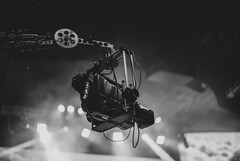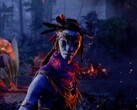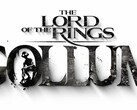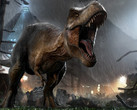1. Motion-controlled camera in Star Wars (1977)
In Star Wars, filmmakers developed a motion-controlled camera and used it against a black background to film high-detail models of spacecraft. The camera would move around the models to create a sense of movement, and the resulting images would be layered over each other. This can be seen as one of the biggest moments in film history, as Star Wars amazed the film industry with its advancements and inspired a generation of filmmakers and VFX artists.
2. Rubber and digital dinosaurs in the same frame in Jurassic Park (1993)
Jurassic Park introduced the concept of a “perfect blend” by smoothly combining digital dinosaurs with rubber dinosaur models. This also marked the beginning of the type of VFX seen in many modern films.
3. Super slow-motion bullets in The Matrix (1999)
The Matrix made history by developing a process known as “bullet time” using a series of cameras arranged and taking consecutive still photos. These still images were then edited to create impressive slow-motion scenes.
4. Motion capture in The Lord of The Rings trilogy (2001-2003)
Although the film had many “old-school” film effects, one process became one of the greatest moments in VFX history: the birth of Motion Capture, or Performance Capture, through the character Gollum. The filmmakers had the actor wear a special suit that allowed them to record the movement and facial expressions of the character. After acting, the source was used to create a 3D version of Gollum.
5. The 3D world in James Cameron's Avatar (2009)
Director James Cameron has always been someone who truly pushes the boundaries in his film production process. Therefore, it is not surprising that his film Avatar took VFX to a new level with Performance Capture. Although there are many flesh-and-blood characters in the film, most of what we see in the film was completed through Performance Capture techniques. Filmmakers expanded on what they learned with The Lord of the Rings to capture more facial emotions, including eye movement. The film sparked a new wave of 3D cinema experiences, exploding after its release.
For more insights into James Cameron's revolutionary filmmaking techniques and thoughts, consider checking out 'James Cameron: Interviews (Conversations with Filmmakers Series)' available on Amazon.













